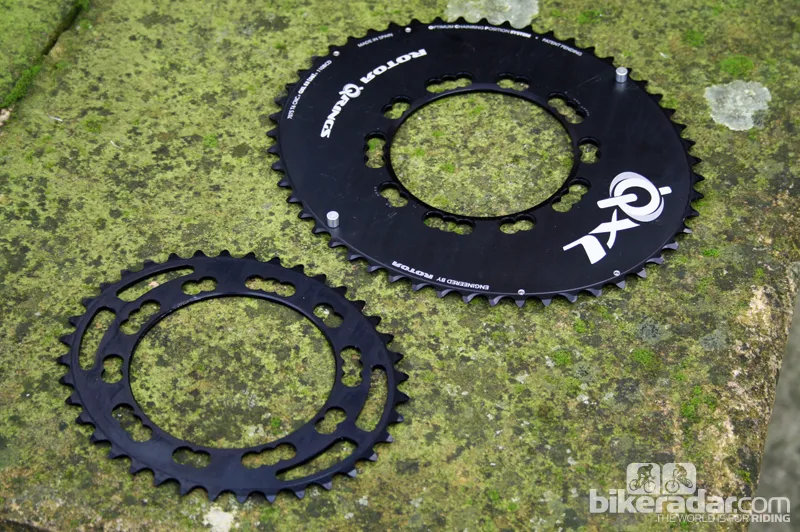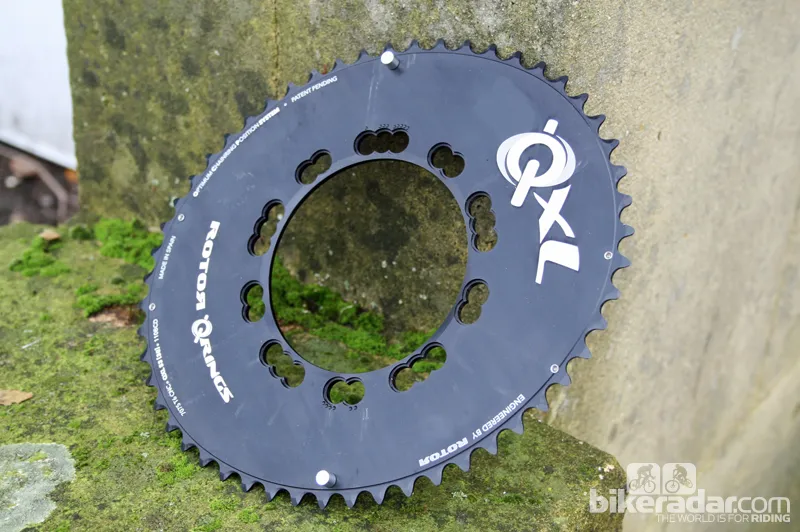Rotor Q-Rings have been around for a few years now, and the oval chainrings have been used to good effect by pros and amateurs alike. Rotor believe that their standard Q-Rings should still be the choice for the majority of riders, but for those who want to spend more time out of the saddle there's a new, more dramatic option: Rotor QXL rings.
The QXL rings were developed after Rotor established that a more oval ring could be advantageous to certain types of rider – rather than a certain type of riding.
Rotor are aware that not all cyclists have the same muscle build, form or pedalling style. And when they trialled a ring of increased ovality among their sponsored athletes, positive results were reported. These pros mostly reported an improved ride experience under acceleration, particularly when out of the saddle.
As with the previous oval rings from Rotor, a rider should experience an effective increase in gear size on the power stroke, and an effective reduction in gear size on the recovery phase of the pedalling cycle.
This effect is accentuated with the more oval QXL rings. Rotor stress that the product won't be for everyone but typically benefits (and is preferred by) more powerful riders with larger muscle mass, who produce higher peak and average power outputs. If you fit the bill and spend a lot of time sprinting in maximum effort situations, these could be for you.
In order to determine whether a customer would benefit from a QXL or standard Q-Ring, Rotor have launched a chainring selection guide.
The QXL rings are available now in one size configuration – 53T/38T – for £180 (US$329.99). More options are in the pipeline. A derailleur adaptation insert is also included, and might be necessary for proper derailleur adjustment.


